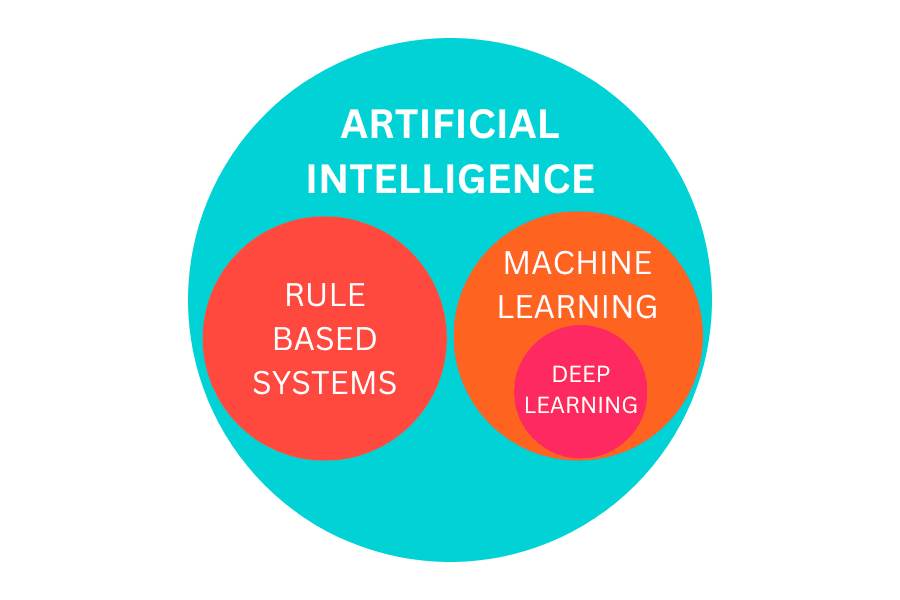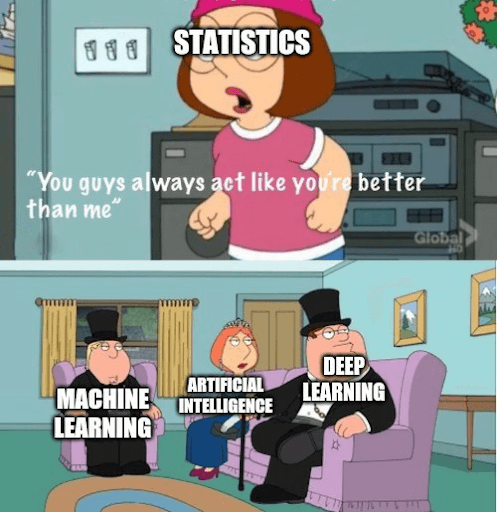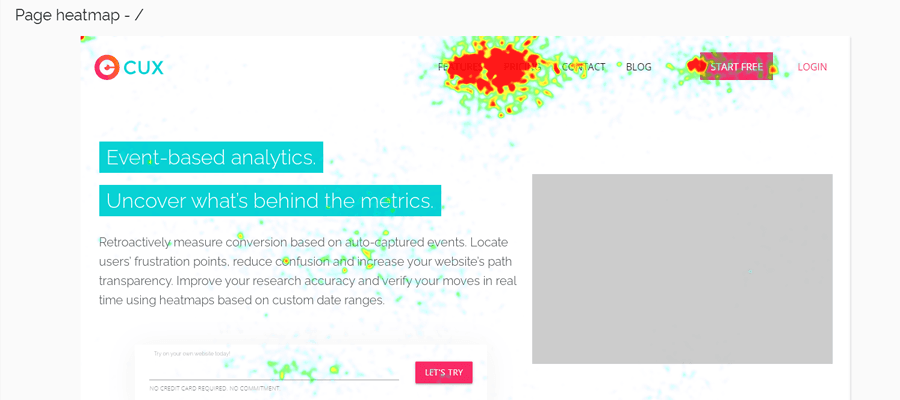Data-Driven Business
15.09.2022
7 minutes read
How does AI improve the efficiency, quality, and accuracy of data analytics?
No one questions the fact that in order to succeed in today's digital world, one must know and understand their users’ needs and behaviors.

List of Contents
No one questions the fact that in order to succeed in today's digital world, one must know and understand their users’ needs and behaviors. And to get to the heart of this information, you require data analysis. But a smarter, AI-powered version.
Artificial Intelligence has entered our lives and is becoming an increasingly integral part of our world. It particularly affects the way we work with data, as it can dramatically improve the efficiency, quality, and accuracy of data analysis.
A brief history of Artificial Intelligence and Machine Learning
If you are well acquainted with terms like Artificial Intelligence, Machine Learning and Deep Learning, feel free to skip right to learning how AI impacts data analytics. However, if you are not an AI whiz, we will guide you through the most important things you should know about artificial intelligence.
‘AI’ refers to hardware or software that exhibits “intelligent” behavior. The first basic Artificial Intelligence systems were developed in the 1950s. These systems were ‘rule-based’, meaning they followed a set of rules written by humans. This presented many limitations, as such systems were unable to perform more advanced tasks, like image recognition.
Artificial Intelligence as we know it today began to gain traction when a subset of AI – Machine Learning – was introduced.

Instead of being rule-based, Machine Learning operates on the basis of continuous ‘training’ of the Artificial Intelligence software. Thanks to that, Machine Learning can perform difficult and highly complex tasks, especially within data analysis. Machine Learning is applied to a wide variety of tasks that require prediction and optimization, in order to determine the probability of specific events taking place.
Deep Learning is a subset of Machine Learning that delivers breakthrough results in fields including computer vision and language. Its structure is inspired by the structure and function of the human brain, and bears the name of the ‘artificial neural network’.

The majority of businesses use AI for data analysis – here is why
Thanks to AI technology, we can bypass the limitations of human capabilities, both in an inexpensive and highly effective way. Artificial intelligence is particularly useful in data analytics, as it increases the speed and accuracy of data processing, understanding and defining the outcomes.
Even though Artificial Intelligence and Machine Learning are driven by pure technology, they actually help your business be more 'human'. Predictive personalization drastically improves your customers' experience. Consequently, the need to obtain more concise data within this area is what drives investments in AI-powered User Experience software.
Companies want to leverage Artificial Intelligence and Machine Learning to analyze large volumes of user data fast and with bullseye accuracy. The accuracy, efficiency, and quality of data analytics provided by artificial intelligence are simply unmatched.
Artificial Intelligence improves efficiency in data analytics
If we want to envision how Ai is helping efficiency improve, let's imagine you operate a website with an average of 10 visitors per day. Now, you’d obviously like to gather as much data on your visitors as possible. Manually gathering, segmenting, and deriving insights from data on 10 people may be possible. But what happens when the number grows tenfold? And then some more? At this point, the process would become extremely time-consuming, if not simply impossible to carry out.
As much as we hate to admit that, humans are not all-knowing and omnipotent. But we are smart enough to develop solutions that can pick up the slack and make it count.
Artificial Intelligence can automate the process of collecting and synthesizing large quantities of data to find patterns in user behaviors, and make sense of it almost immediately.
Artificial Intelligence improves data analytics quality
Artificial Intelligence’s ability to expertly work with data analytics makes Artificial Intelligence and big data inseparable. Research suggests that an average enterprise loses as much as $12.9 million a year due to poor data quality. This shows just how tremendously important quality is for any data-driven business.
By using automated data capturing, AI can identify data flowing in from different sources and to different destinations. This ensures that no input or string of data goes unnoticed.
Artificial Intelligence works expertly at eliminating even the smallest errors in a data set, that could affect the data’s quality and usability. This level of precision could not be replicated with manual data monitoring, nothing slips through the cracks with advanced AI guarding the way.
Artificial Intelligence improves data analytics accuracy
Accuracy must be a primary consideration with automation. This means larger data sets, real-time analytics, and dynamically adaptive algorithms. To achieve this, businesses need high-performance software that provides not just real-time performance. Advanced AI technology also makes it possible to improve accuracy in ways simply not feasible with manual processes.
Using AI to gather data and determine where journeys are failing, such as with its mobile app, Comcast quickly tackles experience issues.
Furthermore, only advanced analytics with accurate measurements, such as the ones provided by AI, can help you develop a unified user profile. Providing your users with personalized experiences is the key to boosting your conversion rates in the long run.

How cux.io uses Artificial Intelligence and Machine Learning to accelerate data analysis
CUX is the first ever UX Analysis & Automation tool, allowing its users to gain deep insights into their users’ behavior and become a data-driven business with the help of Machine Learning. CUX works by detecting behavioral patterns within digital products to simplify the decision-making behind UX optimization. The solution encompasses all the major benefits of Artificial Intelligence in data analytics.
How does CUX improve the efficiency of data analysis?
CUX uses Machine Learning for predictive qualitative analysis to help companies save time, which previously would have been spent performing time-consuming manual data analysis.
CUX makes the research process both faster and more efficient. This is achieved by automating repetitive activities and focusing on decision-making that relies on data-based insights.
CUX's algorithm is capable of detecting your users' pain points and frustrations in as little as 2 minutes, based on the analysis of the user's behavioral patterns. Afterwards, it breaks them down into specific frustrations, which may be inhibiting your conversion rates.

How does CUX improve quality in data analysis?
With CUX you get to analyze both the quantitative and qualitative data insights generated by your users. As we mentioned previously, the quality of the data will wage heavily on the results your business will achieve with it.
CUX merges Visit Recordings and Heatmaps to collect the most comprehensive data image of your users' experience.

How does CUX improve the accuracy of data analysis?
CUX uses AI to ensure that you make data-driven decisions to efficiently scale up your business. To maximize accuracy, users can set up specific Business Goals they want to focus on.
CUX will not only present you with the exact data you need but most importantly interpret the data in relation to your business goal. This allows you to be laser-focused on the goals that require your full attention. Whether that be increasing your conversions, decreasing your cart abandonment rate, or anything in between.

How to improve your Customer Experience with AI-driven data analysis?
Artificial Intelligence technology and data analytics are the lifeblood of successful businesses. There is no doubting the fact that AI and Machine Learning will be taking more and more space in various solutions within the digital marketing industry.
As data-driven marketing has taken over the scene, proved by the superior results it yields, having a toolset of AI-powered software to make the most of your data is the key not only to your business's survival but its supremacy.
Achieve more accurate insights and improve your decision-making by enriching your business' toolkit with the only AI-driven UX & Analysis Automation tool – cux.io.

15/03/2020
7 minutes read
How to support the customer journey on the client’s website – The F1Brand case
Aside from promotional activities carried out for their clients, marketing agencies analyze hundreds of pieces of information every day to make sure their campaigns are working properly.
Read more
26/07/2022
7 minutes read
Improve user experience - 6 Ways to Optimize Your eCommerce UX
User Experience (UX) is extremely important for eCommerce business owners. It is the aspect that has become the wind beneath the wings of successful online stores.
Read more
5/09/2022
7 minutes read
Measuring eCommerce Conversion Rate from paid traffic. Part 1
Advertising campaigns are the driving force behind most eCommerce. Regardless of whether you sell products, services, or ideas, you certainly support activities.
Read more
